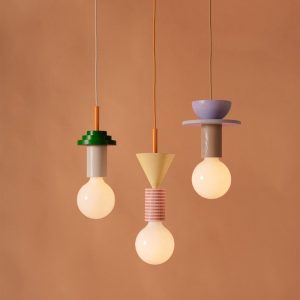Introduction
Lighting is an important aspect of design, and molecular light fixtures have recently gained popularity due to their unique aesthetic appeal and functionality. These fixtures are inspired by the intricate structures of molecules, and each piece is carefully crafted to create a stunning visual effect. In this article, we will explore the science behind molecular light fixtures and the different ways they can enhance the ambiance of a space.
The Science Behind Molecular Light Fixtures
The design of molecular light fixtures is based on the chemical and physical properties of molecules. A molecule consists of atoms that are held together by chemical bonds. These atoms can form different shapes depending on the number and arrangement of the atoms. For example, water molecules are shaped like a V, while methane molecules are shaped like a tetrahedron.
Molecular light fixtures replicate these shapes by using a combination of metal and glass. The metal components act as the atoms, and the glass acts as the chemical bonds holding the components together. The arrangement of the metal components determines the shape of the fixture.
One of the most popular types of molecular light fixtures is the Sputnik chandelier. This fixture was designed to look like the first satellite to orbit the Earth, which was launched by the Soviet Union in 1957. The Sputnik chandelier features a central sphere with arms extending in all directions, resembling the spiky appearance of a molecule. The arms are lined with light bulbs, creating a stunning visual effect when the chandelier is lit.
Functionality of Molecular Light Fixtures
In addition to their aesthetic appeal, molecular light fixtures also have functional benefits. Because of their unique shapes, these fixtures can be used to create different lighting effects. For example, a Sputnik chandelier can be used to create a focal point in a room, drawing attention to the center of the space. Alternatively, a cluster of smaller molecular light fixtures can be used to create a more subtle effect, providing ambient lighting without overpowering the space.
Another benefit of molecular light fixtures is their versatility. They can be used in a wide range of spaces, from formal dining rooms to casual living rooms. Because of their sculptural appearance, these fixtures are also a popular choice for commercial spaces like hotels and restaurants.
Design Tips for Using Molecular Light Fixtures
When using molecular light fixtures in a space, it’s important to consider the overall design of the room. These fixtures work best in rooms with a modern or contemporary aesthetic, as they can look out of place in more traditional spaces.
It’s also important to consider the size of the space when choosing a molecular light fixture. A large fixture like a Sputnik chandelier can overwhelm a smaller space, so it’s important to choose a fixture that’s proportional to the room.
Lastly, it’s important to consider the height of the ceiling when installing a molecular light fixture. These fixtures typically hang lower than traditional chandeliers, so it’s important to make sure there is enough clearance between the fixture and the floor.
Conclusion
Molecular light fixtures are a unique and visually stunning addition to any space. Their design is based on the chemical and physical properties of molecules, and each fixture is carefully crafted to create a striking visual effect. From large Sputnik chandeliers to smaller clusters of fixtures, there are endless ways to incorporate molecular light fixtures into your design. When used correctly, these fixtures can enhance the ambiance of a space while also providing functional lighting.
